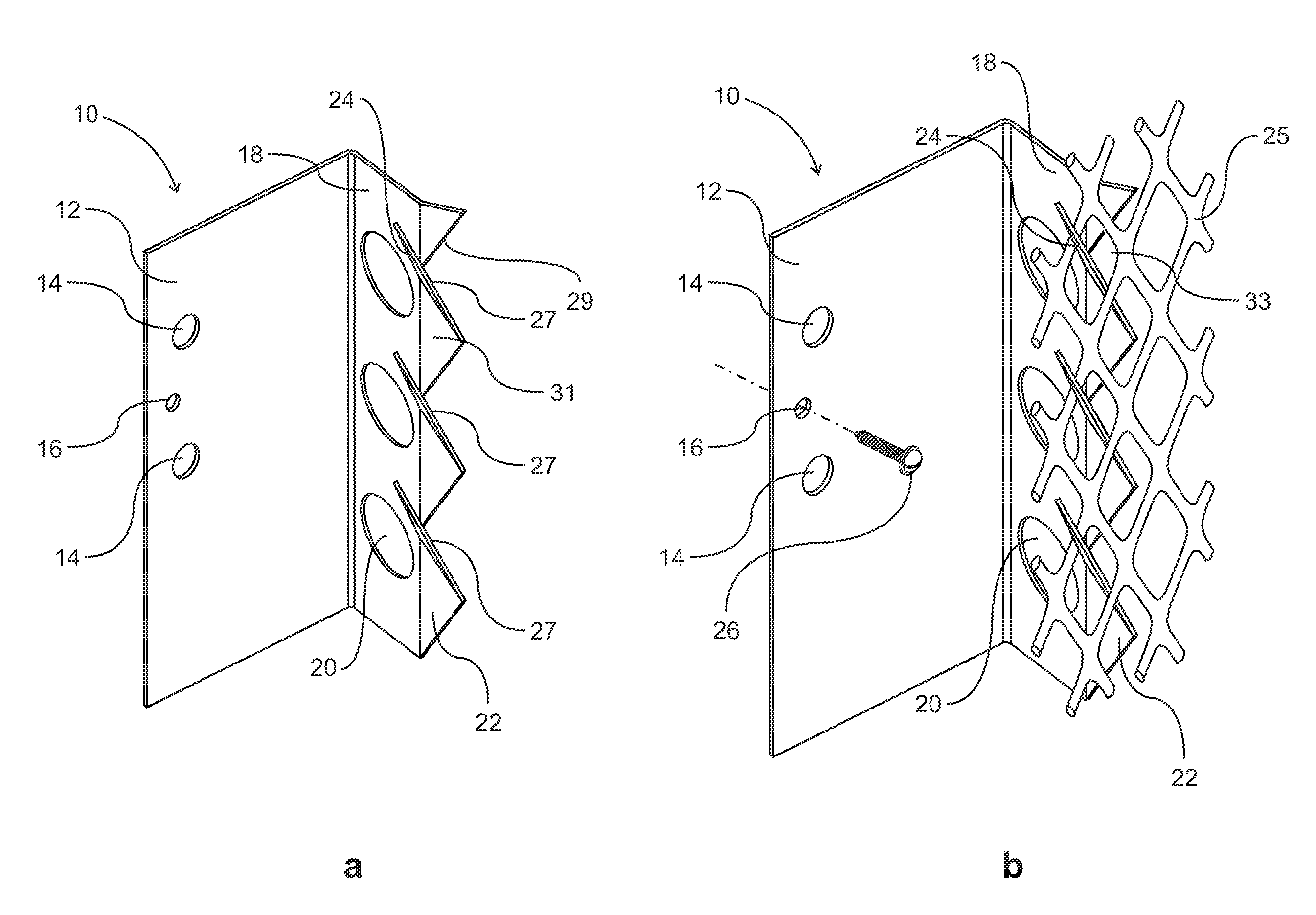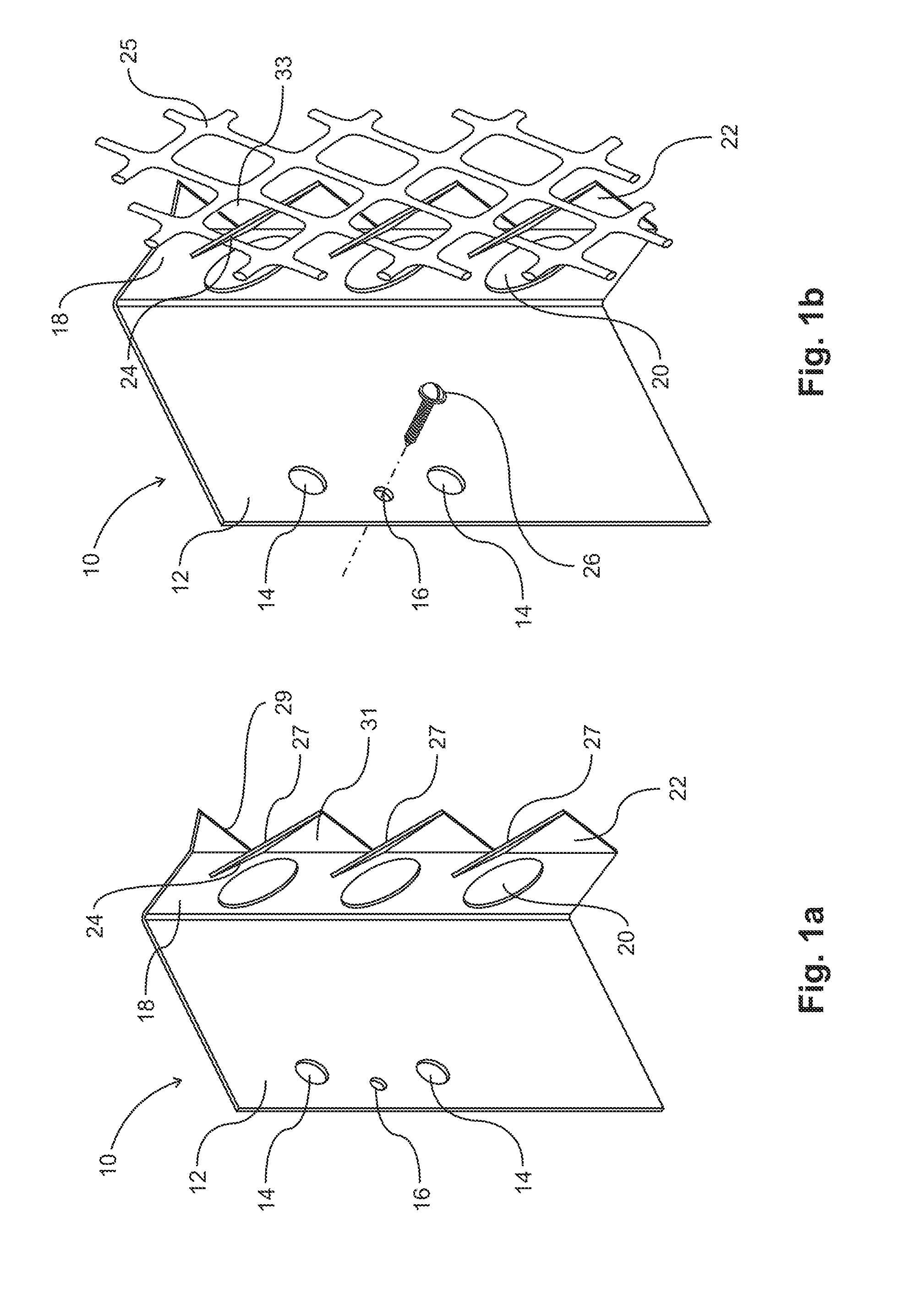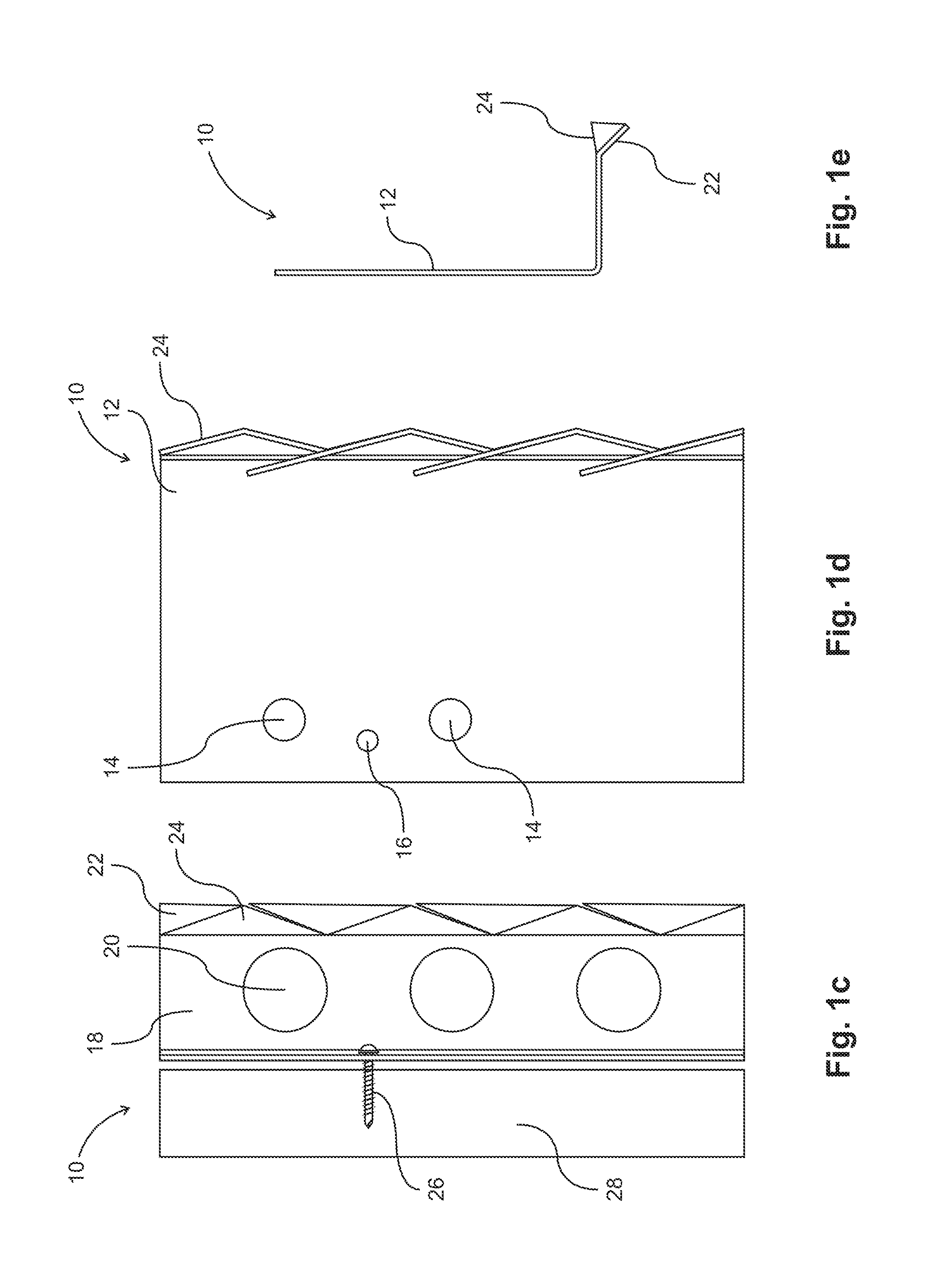Exterior Wall Assembly Systems
a technology of external walls and assemblies, applied in the direction of couplings, manufacturing tools, mechanical devices, etc., can solve the problems of reducing the water resistance of the barrier, so as to increase the water resistance of the system, prevent water, and improve the water resistance. the effect of the water resistan
- Summary
- Abstract
- Description
- Claims
- Application Information
AI Technical Summary
Benefits of technology
Problems solved by technology
Method used
Image
Examples
Embodiment Construction
[0119]The following description is of the best-contemplated mode of carrying out the invention. This description is made for the purpose of illustrating the general principles of the invention and should not be taken in a limiting sense. The scope of the invention is best determined by reference to the appended claims. Preferable embodiments of the present invention are described with reference to the FIGS. 1-30.
[0120]FIGS. 1a-e depicts an embodiment of an attachment strip 10 having teeth able to secure a lath to the attachment strip without the use of any separate attachment device. The attachment strip 10 has a mounting plate 12 that secures the attachment strip 10 to a wall 28 via a screw 26 that enters the mounting plate 12 via a mounting plate screw hole 16. The mounting plate 12 has additional holes 14 for securing the mounting plate 12 to a wall, as well as keying holes 20 where plaster can seep into and bond the lath 25 to the attachment strip 10. Extending substantially per...
PUM
 Login to View More
Login to View More Abstract
Description
Claims
Application Information
 Login to View More
Login to View More - R&D
- Intellectual Property
- Life Sciences
- Materials
- Tech Scout
- Unparalleled Data Quality
- Higher Quality Content
- 60% Fewer Hallucinations
Browse by: Latest US Patents, China's latest patents, Technical Efficacy Thesaurus, Application Domain, Technology Topic, Popular Technical Reports.
© 2025 PatSnap. All rights reserved.Legal|Privacy policy|Modern Slavery Act Transparency Statement|Sitemap|About US| Contact US: help@patsnap.com



